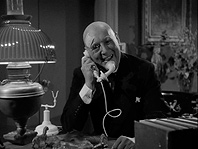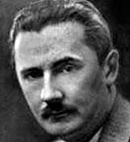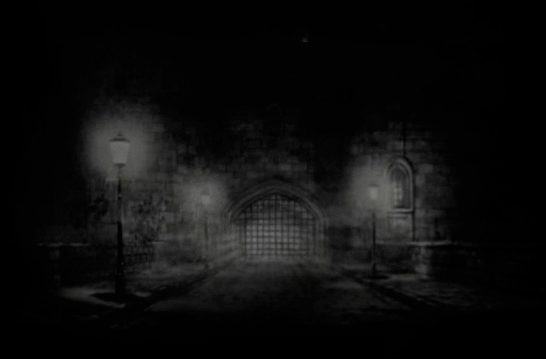Sherlock Holmes Films
» The Adventures of Sherlock Holmes
» The Hound of the Baskervilles
» Voice of Terror
» Sherlock Holmes and the Secret Weapon
» Sherlock Holmes in Washington
» Sherlock Holmes Faces Death
» The Spider Woman
» The Scarlet Claw
» The Pearl of Death
» The House of Fear
» The Woman in Green
» Pursuit to Algiers
» Terror by Night
» Sherlock Holmes and the Secret Code
Sherlock Holmes Films
Holmes: In time, no doubt, we shall be portrayed on the cinematograph as well.
Watson: Nonsense Holmes, that newfangled thing's only a toy.
Watson: Nonsense Holmes, that newfangled thing's only a toy.
The Purloined Ruby, Old-time Radio episode
Basil Rathbone and Nigel Bruce are still seen by many as the quintessential Sherlock Holmes and Dr. Watson, the definitive screen portrayal of literature's greatest detective and his “faithful watchdog”. Many others have played the parts admirably but Rathbone & Bruce's partnership is one of the most recognisable in cinema. They were so good together, that their version of The Hound of the Baskervilles is the only Sherlock Holmes film that is considered a classic of cinema. Together, they starred in fourteen films from 1939 to 1946 as Holmes and Watson.
Rathbone's portrayal of Holmes is critically acclaimed. His powerful voice, physical resemblance to the great detective, and his screen presence still equates Holmes with Rathbone in the minds of many people, over 80 years later. Other actors have played the part very well, particularly Jeremy Brett, who's excellent and inspired interpretation is considered the best by a good many people. Many, many actors have played Holmes on screen – Peter Cushing and Arthur Wontner are more than worthy of mention, whilst Jonny Lee Miller and Benedict Cumberbatch have put a contemporary stamp on the role in this century; but for me, Rathbone's interpretation is archetypal.
Nigel Bruce's portrayal of a bumbling Dr. Watson has long been criticised, and there's some merit to this view. However, Bruce has some of the best scenes and funniest lines and after watching the films more times than I care to mention, I see his interpretation in a more flattering light. It is said that when Rathbone was suggested to the film studio for the role of Holmes, Nigel Bruce's name was immediately put forward for the part of Dr. Watson. In addition, before Bruce took on the role of Dr. Watson, the good doctor had been a minor and sometimes absent character in the Sherlock Holmes films; but Bruce made the role his own, and now it is inconceivable to think of a Sherlock Holmes story in film, radio or on the written page that doesn't have Dr. Watson at centre stage with the great detective. Bruce's Dr. Watson is the one I’d most like to meet and chat about “the mutability of human affairs”, with a brandy at my elbow and smoking a pipe or two.
The films all share a great use of noir-esque cinematography (the films themselves are not film noir), which is perfect for creating an eerie atmosphere, and adding to the suspense. There's always a femme fatale or arch criminal in the mix, and more often than not, both. Snappy dialogue, a good helping of humour, and fast–paced plots combined with the aesthetics make a great way to pass an hour or so in front of the telly. Murder, blackmail, theft, fraud and a myriad of other crimes test our heroes' mettle, and the result is fourteen highly enjoyable films which have aged very well.
Click on the film names at the top of the page for a synopsis of the plot, more images, audio clips, quotes and more. I've made a page for each of the fourteen films, with extra information and trivia, and please hover over the main cast NAMES for screen shot and click
for a short audio quote. My personal recommendations of the series are; Terror by Night, The House of Fear, Sherlock Holmes Faces Death, The Hound of the Baskervilles, The Adventures of Sherlock Holmes, and The Scarlet Claw.
for screen shot and click
for a short audio quote. My personal recommendations of the series are; Terror by Night, The House of Fear, Sherlock Holmes Faces Death, The Hound of the Baskervilles, The Adventures of Sherlock Holmes, and The Scarlet Claw.
Here's a great clip from The House of Fear:
A Bit of Background
Rathbone & Bruce made their first appearance as Holmes and Watson in 20th Century Fox's production of The Hound of the Baskervilles in 1939, followed later that year by The Adventures of Sherlock Holmes. These two films are both characterised by high production values, with lavish sets and wardrobe, as well as the having the longest running times in the series. And they're also the only two films in the series set in the same period as that in the original novels, i.e. the late 19th century.
There was a break of three years between the two 20th Century Fox films in 1939 and the twelve Universal Studios releases which ran from 1942 to 1946, the interlude was most probably due to the outbreak of World War II. Rathbone & Bruce continued in their roles as Holmes and Watson during those three years, starring in the Old-time radio series, The New Adventures of Sherlock Holmes. This series was very popular in its day, and it remains the most popular Old-time series of all time, and it can be argued that it was the success on the radio that led to the resurrection of the film series.
Universal Studios took up the baton in 1942 and went on to
release a further twelve films, all but one directed by Roy William Neill , who also became series producer with the release of Sherlock Holmes in Washington. These dozen films are all updated to the 1940s, a tradition with all great literature that continues today with the BBC updating their latest interpretation to contemporary times. The Universal releases are all marked by a quicker pace in both direction
and plot, and they all feature shorter scenes which results in shorter running times.
, who also became series producer with the release of Sherlock Holmes in Washington. These dozen films are all updated to the 1940s, a tradition with all great literature that continues today with the BBC updating their latest interpretation to contemporary times. The Universal releases are all marked by a quicker pace in both direction
and plot, and they all feature shorter scenes which results in shorter running times.
Of the twelve Universal films, there are three films that feature World War II as the backdrop; Voice of Terror, The Secret Weapon, and Sherlock Holmes in Washington. These three films all come with an unsubtle dollop of propaganda, so no different from today really. And in the same vein, the first of the updated films, Voice of Terror, is about defeating a Nazi propagandist and a fiendish German plan to invade Britain.
Some of the actors who appear beside Rathbone & Bruce make multiple appearances as different characters throughout the series, e.g. Sally Sheperd, Frederick Worlock, Harry Cording, Leyland Hodgson, to name but a few.
The untimely death of Neill in late 1946 meant a sad and abrupt end to the series, and alas, Rathbone & Bruce never appeared on screen as Holmes and Watson again.

